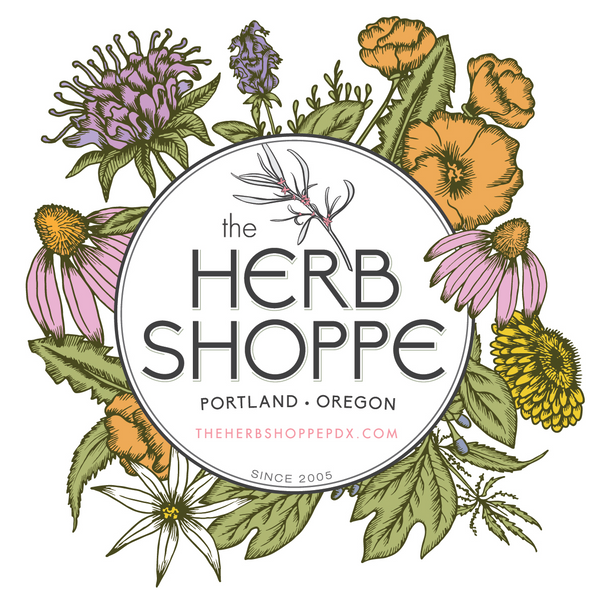Featuring Muscle Ease Salve
Warmer weather encourages us to get out of doors, go on more adventures, and engage in more physical activities. You may find yourself upping your game, but as you increase your playtime, you also intensify your body’s physical demands. Wake up feeling tender? Perhaps it was too much canoeing across the lake over the weekend. Are you a little stiff when you stand up? Could be that extended frisbee golf tournament from last night. But don’t disintegrate into a couch potato just yet! Here are some tips to manage the soreness an active life creates so you can keep being adventurous without throwing in the towel!
Why am I sore?
Delayed onset muscle soreness (DOMS) is common after a strenuous workout or any physical activity which is new or different from what your body is used to. It’s likely formed from the micro tears that occur in your muscle tissue during the activity – such as when you’re pushing through that last mile during a marathon, or you’ve been paddling across the lake all day, or throwing frisbees way past sunset. The process your body goes through to repair these microtears is somewhat inflammatory and painful, but it also encourages muscle growth, thus making your body stronger. It shouldn’t last too long or be excruciating – if it is, you may be injured, and you should see a healthcare professional. But if you’re just a little sore and you’d like to get back out on the water or into a frisbee golf tournament pronto, follow these tips to hasten your recovery time.
5 Tips to Relieve Sore Muscles:
Drink water before, during, and after you participate in new or strenuous activities. When you drink enough water, your body can deliver nutrients to all of your active muscles, thus decreasing inflammation. Dehydration can actually manifest as muscle soreness, so naturally, drinking water is a key factor in reducing this sensation if you want to recover more quickly. Consider sipping on electrolyte-laced beverages if it helps you keep your fluid intake up, as long as those beverages don’t contain diuretics like caffeine, which can further dehydrate you.
Not only is it relaxing but research shows that massage therapy reduces muscle soreness by taking inflammation down a notch, increasing blood and lymph flow as well as joint range of motion and then there’s the fact that it feels good – which boosts your mood, squashing feelings of fatigue. If you want to get fancy, consider adding essential oils to the mix. Oils such as marjoram, lavender, or peppermint have lots of studies to back the claims made about their pain-relieving properties, and you have plenty of different scents to choose from.
For a more affordable option, you could try massaging yourself at home using a myofascial release technique with foam rollers. This method uses a foam roller (a cylindrical tube) to massage your fascia, which is the connective tissue just under your skin that holds your muscles, tendons, and ligaments together. Much like massage therapy, foam rolling eases muscle pain and soreness by reducing muscle inflammation while increasing joint range of motion and blood flow to muscles, thus aiding in overall recovery. It may take a little practice so start off slowly and gently. Be careful not to roll over any part of your body for more than 2 minutes at a time. You might want to start with a low-density foam roller or massage ball as both are softer and then move up to firmer rollers over time.
Both heat and ice can help sore muscles – so the question is when to use which element? Think of ice as slow and heat as fast. An ice compress will slow your circulation down, which will reduce any swelling and pain-related inflammation. Newer areas of pain respond well to ice. Whereas a hot compress will increase circulation, so perhaps it is more suited for areas that tend to continually become sore, are older injuries that flare up from time to time or that run tight, as the heat relieves tight, sore muscles and encourages blood flow to the area. Research suggests that applying ice or heat therapy within 1 hour of exercise is the optimum time to help soothe achy muscles up to 24 hours afterward.
A salve applied topically to your sore muscles is another great way to bring relief – especially when it is packed with herbs that are anti-inflammatory and pain-relieving, such as THS Muscle Ease Salve. The base is made from Olive Oil and Beeswax, which blends easily into your skin. A propriety combination of St. John’s Wort, Poplar Bud, and Arnica oils help stimulate circulation, relieve pain, reduce swelling, bruises, and decrease joint stiffness. Kava Kava Root helps the muscles relax and releases tension. Essential oils Frankincense and Ginger bring additional calming, pain-relieving properties as well as block inflammation-causing enzymes that can result in pain and swelling of cartilage tissue in joints and tendons. Apply topically as often as needed, but do not ingest as Arnica especially is toxic if taken internally.
Now that you have these tips, don’t hesitate to keep hiking, biking, kayaking, or embarking on whatever adventure calls you this season! You don’t need to fear waking up a little tender – you can always reach for a little Muscle Ease Salve or look for your foam roller before picking up your frisbee or lacing up your running shoes once again.


